Uruguay |
|
|
|
| Übersicht – Contents: | |
Uruguay |
|
|
|
| Übersicht – Contents: | |
| Flaggen – Flags: | |
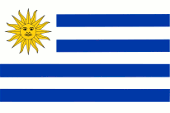 |
National-, Staats-, Handels- und Marineflagge – national, state, merchant and naval flag, Seitenverhältnis – ratio = 2:3, Quelle/Source, nach by: Flags of the World   |
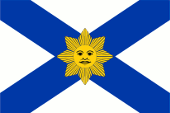 |
Gösch – naval jack, Seitenverhältnis – ratio = 2:3, Quelle/Source, nach by: Flags of the World |
 |
Flagge des Präsidenten als Oberbefehlshaber der Streitkräfte – flag of the President as Commander-in-Chief of the Armed Forces, Seitenverhältnis – ratio = 3:5 (?), Quelle/Source, nach by: Flags of the World |
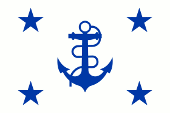 |
Flagge des Verteidigungsministers – flag of the Minister of Defense, Seitenverhältnis – ratio = 2:3, Quelle/Source, nach by: Flags of the World |
 |
Flagge des Oberbefehlshabers der Marine – flag of the Commander in Chief of the Navy, Seitenverhältnis – ratio = 2:3, Quelle/Source, nach by: Flags of the World |
 |
Flagge eines Vizeadmirals der Marine – flag of a Vice Admiral of the Navy, Seitenverhältnis – ratio = 2:3, Quelle/Source, nach by: Flags of the World |
 |
Flagge eines Konteradmirals der Marine – flag of a Rear Admiral of the Navy, Seitenverhältnis – ratio = 2:3, Quelle/Source, nach by: Flags of the World |
 |
Flagge eines Kapitäns im Kommando – flag of a Captain in Command, Seitenverhältnis – ratio = 2:3, Quelle/Source, nach by: Flags of the World |
| historische Flaggen – historical Flags: | |
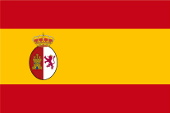 |
bis/to 1810, |
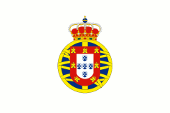 |
1817–1822, |
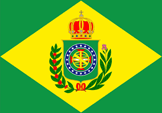 |
1822–1825, |
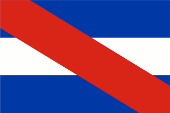 |
1815–1817, Uruguay / Patria vieja, |
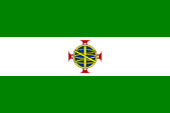 |
1817–1825, Brasilien / Brazil, |
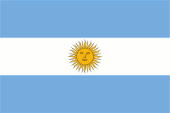 |
1825–1828, |
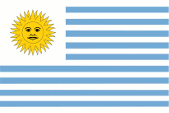 |
1828–1830, Uruguay, |
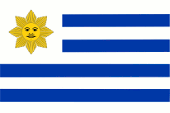 |
1830–1834, Uruguay, |
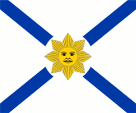 |
bis/to 1934, Uruguay, |
 |
bis/to 1934, Uruguay, |
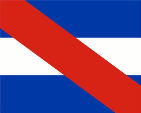 |
1934–ca. 1995, Uruguay, |
 |
ab/from 1934, Uruguay, |
| Die heutige Flagge Uruguays wurde am 11.07.1830 eingeführt. Sie zeigt neun waagerechte Streifen in Weiß und Blau und eine weiße Oberecke mit einer gelben Sonne darin. Die Farben der Flagge gehen auf die argentinische Nationalflagge zurück, für das Design stand die Flagge der USA Modell. Die gelbe Sonne in der weißen Oberecke ist die Freiheitssonne, ein in fast allen Staaten Südamerikas verbreitetes Symbol für Freiheit und Unabhängigkeit. Die Farbtöne der Farben der Flagge sind nicht definiert. Die Flaggenschichte des Landes zeigt immer wieder Versionen in vorherrschend hellerem oder dunklerem Blau, was mit dem jeweiligen Geschmack der Zeit und auch dem Alter der Vorlagen zu tun hat. Auschlaggebend dürfte in der frühen Zeit der Farbstoff Indigo gewesen sein, ein pflanzliches Färbemittel, das unterschiedlich stark färbt und auch schnell auswäscht. Die Flagge wurde im Zusammenhang mit der Erlangung der Unabhängigkeit im Jahre 1828 geschaffen. Sie zeigte zunächst neun blaue Streifen, um die Anzahl der Provinzen des Landes zu verkörpern. Die große Anzahl der Streifen, neun blaue und zehn weiße, machte Probleme bei der Herstellung der Flagge, so das am 11.07.1830 die heutige Form eingeführt wurde. Sie zeigte nun insgesamt neun Streifen, fünf weiße und vier blaue. Die Zahl der Provinzen hat sich mittlerweile geändert, jedoch wurde das Design der Flagge beibehalten. Die Gösch Uruguays wurde Mitte der 90er Jahre eingeführt. Sie zeigt ein weißes Flaggentuch mit einem blauen Diagonalkreuz und der gelben Freiheitssonne in der Mitte. Ein ähnliches Design wurde schon zu Beginn des 20. Jahrhunderts verwendet. Angeblich wird sie inoffiziell und ohne Genehmigung von der Marine auch als Marineflagge benutzt, sie weht quasi nicht nur am Bug der Kriegsschiffe. Eine weitere bedeutende Flagge des Landes ist die Flagge von José Gervasio de Artigas, dem Nationalhelden von Uruguay. Sie zeigt drei horizontale Streifen in Blau, Weiß und Blau (ähnlich der Flagge Argentiniens) und einen roten diagonalen Balken. Diese Flagge war von den 30ern bis in die 90er Jahre des 20. Jahrhunderts die Gösch der uruguayischen Marine. Das Design der Artigas-Flagge wird noch als Hoheitszeichen der Luftwaffe verwendet. |
The current flag of
Uruguay was introduced on 11th of July in 1830. It shows nine horizontal
stripes in white and blue and a white upper corner with a yellow sun in it.
The colours of the flag go back to the Argentinian national flag, while the USA flag was the model for the design. The yellow sun in the white upper corner is the freedom sun, a symbol of freedom and independence that is widespread in almost all South American countries. The shades of the colours of the flag are not defined. The country's flag history repeatedly shows versions in predominantly lighter or darker blue, which has to do with the flavour of the time and also the age of the originals. The decisive factor in the early period was probably the indigo dye, a vegetable colouring agent that dyes to varying degrees and also washes out quickly. The flag was created in connection with the attainment of independence in 1828. It initially featured nine blue stripes to symbolise the number of provinces in the country. The large number of stripes, nine blue and ten white, caused problems in the production of the flag, so the current form was introduced on 11th of July in 1830. It now showed a total of nine stripes, five white and four blue. The number of provinces has since changed, but the design of the flag has been retained. The Uruguayan naval Jack was introduced in the mid-1990s. It shows a white bunting with a blue diagonal cross and the yellow liberty sun in the centre. A similar design was already used at the beginning of the 20th century. It is said to be used unofficially and without authorisation by the navy as a naval flag and is not only flown on the bow of warships. Another important flag of the country is the flag of José Gervasio de Artigas, the national hero of Uruguay. It shows three horizontal stripes in blue, white and blue (similar to the flag of Argentina) and a red diagonal bar. This flag was the naval jack of the Uruguayan navy from the 1930s until the 1990s. The design of the Artigas flag is still used as the emblem of the air force. |
| Quelle/Source: Flags of the World, Die Welt der Flaggen, Flaggen Wappen Hymnen, Flaggen und Wappen der Welt, Volker Preuß | |
Wappen – Coat of Arms: |
|
 |
Wappen von Uruguay – coat of arms of Uruguay, Quelle/Source: Corel Draw 4 |
| Das Staatswappen von Uruguay wurde 1829 eingeführt, und 1908 per Gesetz bestätigt. Es wurde an das Design des Stadtwappens der Haupstadt Montevideo aus dem 18. Jahrhundert angelehnt. Es zeigt einen gevierteilten ovalen Schild mit blauen und weißen Feldern. Im ersten Feld eine Waage auf Blau, sie steht für Gleichheit und Gerechtigkeit, im zweiten Feld den Berg Montevideo auf Weiß, er steht für Wehrhaftigkeit und Stärke, im dritten Feld ein Pferd auf Weiß, es steht für die Freiheit und im vierten Feld einen gelben Stier auf Blau, er steht für Wohlstand. Oberhalb des Schildes die Freiheitssonne. Das Schild ist umgeben von einem Öl- und einem Lorbeerzweig, die mit einer blauen Schleife verbunden sind. Sie repräsentieren die Freiheit, die im Kampf gegen Brasilien errungen wurde. | The
national coat of arms of Uruguay, was introduced in 1829, and 1908 confirmed
by law. It was designed after the pattern of the emblem of the capital
Montevideo from the 18th century. It shows a quartered oval scutcheon with
blue and white fields. In the first field are palced scales on blue, it stands for equality and justice, in the second field the mountain Montevideo on white, it stands for power and defensive strength, in the third field a horse on white, it stands for freedom and in the fourth field a yellow bull on blue, he stands for prosperity. Above the shield the sun of freedom. The shield is surrounded by an oil-twig and a laurel-twig, bond with a blue ribbon. They represent the freedom which was won in the fight against Brazil. |
| Quelle/Source: Die Welt der Flaggen, Flaggen Wappen Hymnen, Flaggen und Wappen der Welt, Volker Preuß | |
Flugzeugkokarde – aircraft roundel: |
|
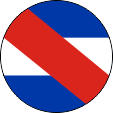 |
Flugzeugkokarde – aircraft roundel Quelle/Source, nach/by Wikipedia (EN) |
 |
Flugzeugkokarde für Marineflieger – aircraft roundel for naval aircrafts Quelle/Source, nach/by Wikipedia (EN) |
| Landkarte – Map: |
|
|
| Zahlen und Fakten – Numbers and Facts: | |
|
|
|
|
|
|
|
|
|
|
|
|
|
|
|
|
|
|
|
Mittelalter
· das heutige Uruguay ist von den indianischen Stämmen der Charrúas,
Guanaes, Yaros und Chanaes dünn besiedelt 1515 · der spanische Seefahrer Juan Díaz de Solís entdeckt das heutige Uruguay beim Befahren des Rio de la Plata auf der Suche nach einer Westpassage nach Indien, das Land wird von Spanien in Besitz genommen, jedoch vorerst nicht kolonisiert 1680 · Gründung der Kolonie Sacramento östlich des Uruguay-Flusses durch portugiesische und spanische Viehzüchter, Versuche Portugals über seine Kolonie Brasilien das heutige Uruguay in Besitz zu nehmen 1726 · Gründung der Festung Montevideo durch Spanien 1776 · Gründung des spanischen Vizekönigreichs Río de la Plata (heutiges Bolivien, Paraguay, Uruguay, Nordargentinien, Nordchile, und der brasilianische Bundesstaat Rio Grande do Sul) durch Abtrennung vom Vizekönigreich Peru, das heutige Uruguay wird "Banda Oriental" genannt, die "Ostseite" des Rio de la Plata 1806 · Montevideo wird von britischen Truppen besetzt 25.05.1810 · Sturz des spanischen Vizekönigs von Río de la Plata, Beginn des Freiheitskampfes gegen Spanien, später Ausrufung der Vereinigten Provinzen von La Plata ab 1811 · der Nationalheld José Gervasio de Artigas verteidigt Uruguay gegen spanische und argentinische Eroberungsversuche, seine Armee nennt sich "Los Tupamaros" 1814 · argentinische Truppen erobern Montevideo 1815 · Artigas erobert Montevideo 1817 · Portugal erobert Montevideo und gliedert die Banda Oriental als Provinz Cisplatina Brasilien an 1820 · Artigas flieht nach Paraguay 19.04.1825 · Juan Antonio Lavalleja überquert den Fluss Uruguay und marschiert in das Land ein 25.08.1825 · Erklärung der Unabhängigkeit gegenüber Brasilien, Wiedereingliederung in die Vereinigten Provinzen von La Plata (Argentinien) als autonome "Provinz Oriental" 1825–1828 · Krieg zwischen Uruguay und Brasilien März 1826 · die Regierung der Vereinigten Provinzen von La Plata (Argentinien) schafft die Autonomie der "Provinz Oriental" ab 27.08.1828 · Vertrag von Río de Janeiro zwischen den Vereinigten Provinzen von La Plata (Argentinien) und Brasilien unter Vermittlung Großbritanniens, die Unabhängigkeit Uruguays wird bestätigt 01.12.1828 · Separation von den Vereinigten Provinzen von La Plata (Argentinien), Proklamation des Staates Montevideo 18.07.1830 · Proklamation der "República Oriental del Uruguay", erste Verfassung 1836–1838 · Bürgerkrieg 1843–1852 · "Guerra Grande", "Großer Krieg", Bürgerkrieg unter Beteiligung Argentiniens und Brasiliens 1864–1870 · Krieg Argentiniens, Brasiliens und Uruguays (mit Unterstützung von Frankreich und Großbritannien) gegen Paraguay, Niederlage von Paraguay, Verlust von 4/5 der Bevölkerung und riesigen Teilen seines Territoriums 1870–1900 · Einwanderung von Europäern aus Italien, Spanien, Frankreich und Deutschland 1917 · neue Verfassung 1936 · neue Verfassung 1966 · neue Verfassung, Wiedereinführung der Präsidialdemokratie 1968 · Unruhen 1970–1972 · Guerillakrieg der "Tupamaros" 1972 · Verhaftung des Tupamaro-Führers Sendic 1973 · Machtübernahme durch das Miltär 1985 · Demokratisierung, Wahlen 1992 · Unruhen 2001 · Beginn einer Wirtschafts- und Bankenkrise |
|
Middle Ages
· the today's Uruguay is sparsely populated by the native american tribes of
the Charrúas, Guana, Yaros and Chana 1515 · the Spanish seafarer Juan Díaz de Solís discovered today's Uruguay during the crossing of Rio de la Plata in search of a western passage to India, Spain took possession of the land but initially not colonized 1680 · Founding of the colony Sacramento eastern of the River Uruguay by Portuguese and Spanish ranchers, attempts to take possession by Portugal and his Colony of Brazil 1726 · Founding of the Fortress of Montevideo by Spain 1776 · establishment of the Spanish Vice-Kingdom of Río de la Plata (today’s Bolivia, Paraguay, Uruguay, Northern Argentina, Northern Chile, and the Brazilian federal state of Rio Grande do Sul) by separation from the Vice-Kingdom of Peru, the today's Uruguay is called in this time "Banda Oriental", the "east side" of Rio de la Plata River 1806 · Montevideo is occupied by British troops 25th of may 1810 · overthrow of the Spanish Viceroy of Río de la Plata, Beginning of the fight for freedom against Spain, later proclamation of the United Provinces of La Plata since 1811 · the national hero Jose Gervasio Artigas defends Uruguay against Argentine and Spanish conquest attempts, his army is called "Los Tupamaros" 1814 · Argentine troops conquer Montevideo 1815 · Artigas conquers Montevideo 1817 · Portugal conquers Montevideo and incorporates Banda Oriental as Province of Cisplatina to Brazil 1820 · Artigas flees to Paraguay 19th of April 1825 · Juan Antonio Lavalleja crosses the Uruguay River and marches in the country 25th of August 1825 · Declaration of independence from Brazil, back into the United Provinces of La Plata (Argentina) as an autonomous "Province Oriental"" 1825–1828 · war between Uruguay and Brazil March 1826 · the Government of the United Provinces of La Plata (Argentina) abolishes the autonomy of the "Province Oriental" 27th of August 1828 · Treaty of Rio de Janeiro between the United Provinces of La Plata (Argentina) and Brazil under the mediation of Great Britain, the independence of Uruguay is confirmed 1st of December 1828 · Separation from the United Provinces of La Plata (Argentina), proclamation of the State of Montevideo 18th of July 1830 · proclamation of the "República Oriental del Uruguay", first constitution 1836–1838 · civil war 1843–1852 · "Guerra Grande", "Big War", civil war with participation of Argentina and Brazil 1864–1870 · war of Argentina, Brazil and Uruguay (supported by France and Great Britain) against Paraguay, defeat of Paraguay, loss of 4/5 of the population and huge parts of its territory 1870–1900 · Immigration of Europeans from Italy, Spain, France and Germany 1917 · new constitution 1936 · new constitution 1966 · new constitution, re-introduction of presidential democracy 1968 · riots 1970–1972 · guerrilla war of the "Tupamaros" 1972 · Arrest of the Tupamaro leader Sendic 1973 · seizure of power by the military 1985 · democratization, elections 1992 · riots 2001 · beginning of an economic and banking crisis |
| Quelle/Source: Atlas zur Geschichte, Weltgeschichte, Discovery '97, Wikipedia (D) |
| Der Name des Landes geht auf den Fluss "Uruguay" zurück, der Grenze im Westen bildet. "Uruguay" heißt in der Sprache der im 19. Jahrhundert ausgerotteten Indianer "Fluss des bunten Vogels". Der Name des Landes ist offiziell: "República Oriental del Uruguay", was "Republik Östlich des Uruguay" heißt. | The name of the country has its roots in the River "Uruguay", which is the border in the west. "Uruguay" means in the language of the in the 19th Century eradicated Indians "river of the colorful bird". The official name of the country is: "República Oriental del Uruguay," what means "Republic in the East of Uruguay". |
| Quelle/Source: Handbuch der geographischen Namen, Volker Preuß | |